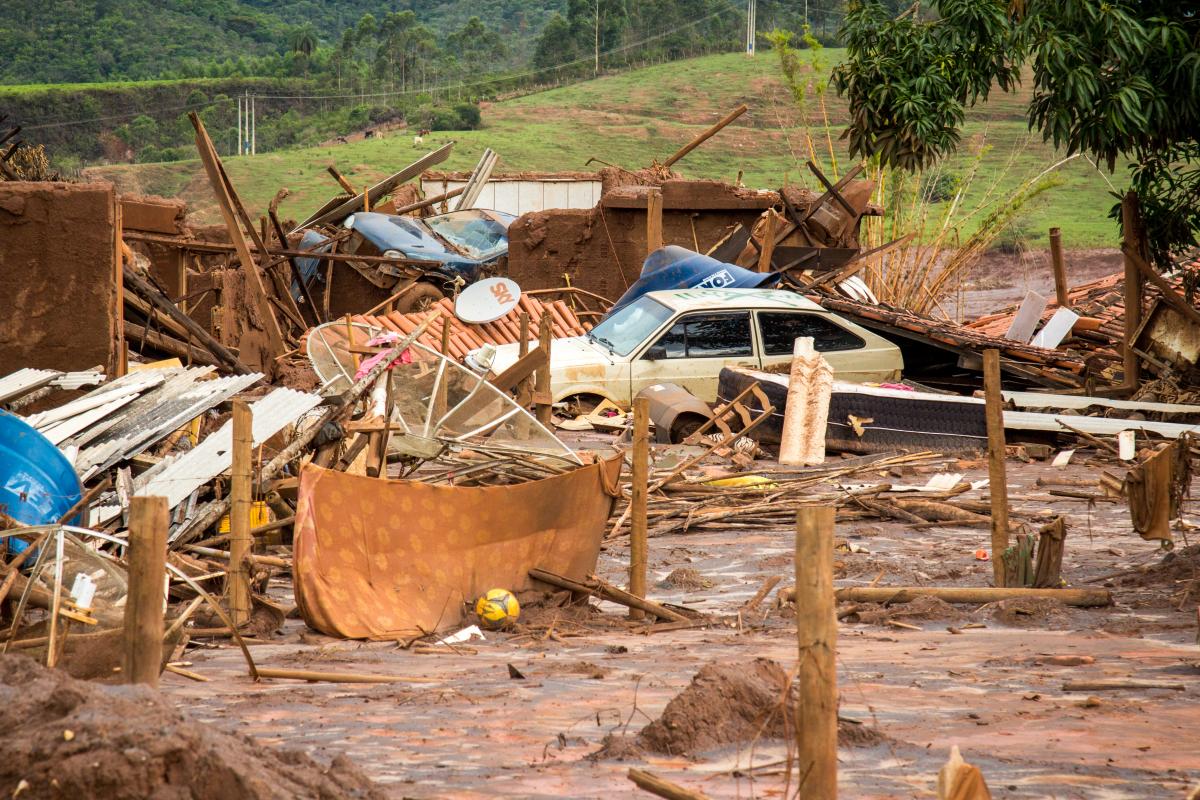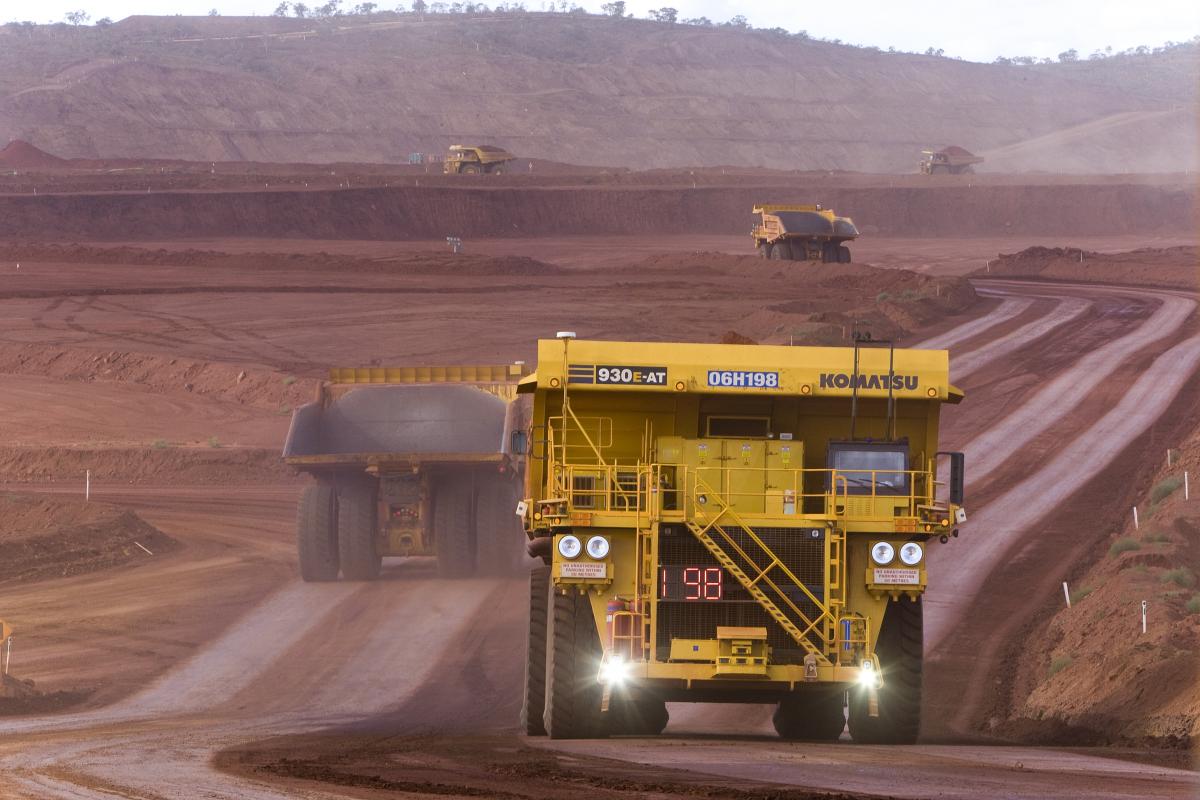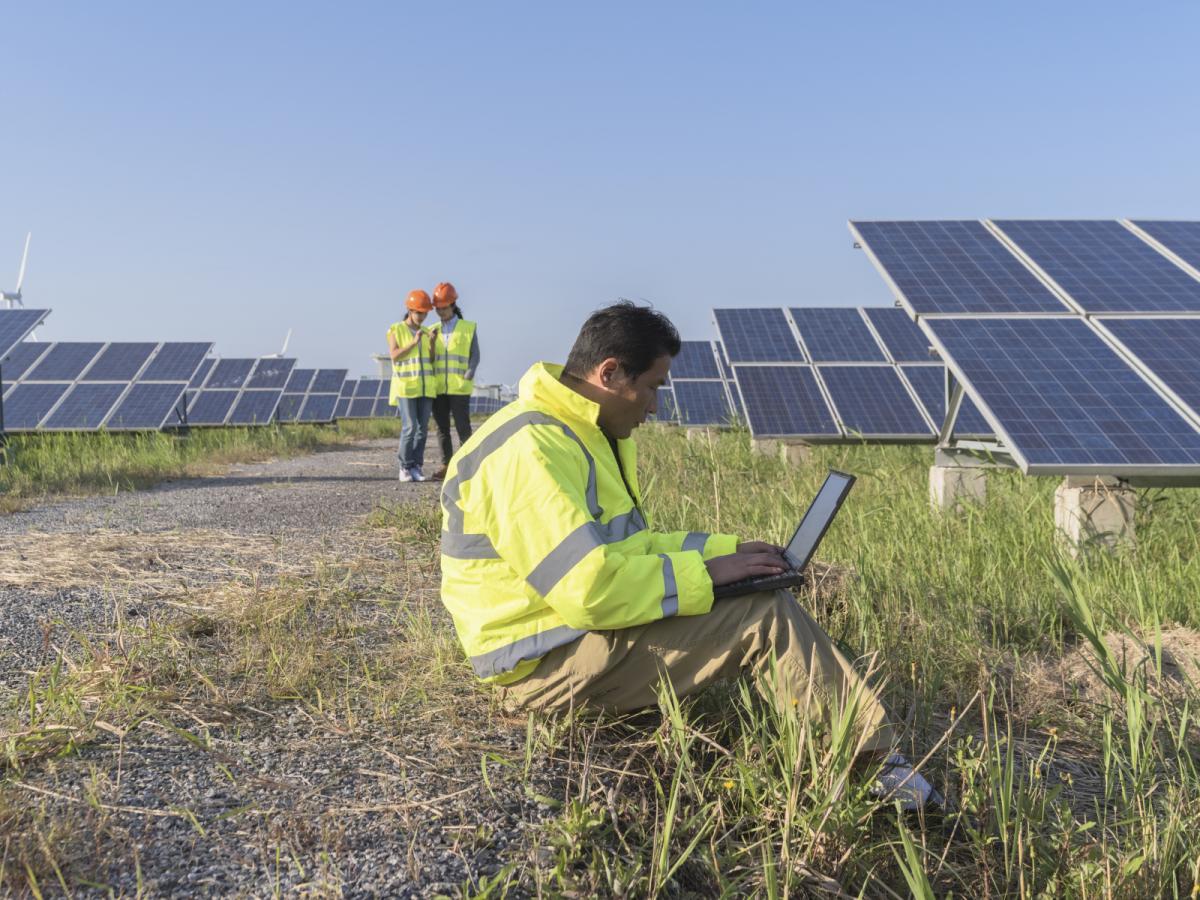Under fire as never before for the social and environmental destruction it causes, the world’s dirtiest industry is trying to come clean
As industries go, mining is among the most destructive to nature and humans, and one of the most hazardous for employees. Besides the noise, mess and inherent risk of water and soil contamination and erosion from every day operations, there are the periodic large-scale accidents and resulting environmental and human damage that all add up to make mines unpopular neighbours.

At the same time, mines provide necessary materials and often much-needed jobs and infrastructure. And mining companies are recognising in greater numbers the need to change the way they operate or continue to face opposition from local and environmental groups. With the price of minerals dropping, and coal being shunned by many investors as dirty, mining companies are working more directly with communities, government officials and employees to keep them informed, involved and safe on the job, minimise environmental risks and respond to consumer demand for responsibly mined materials.
“We are trying to break the idea of a dirty, noisy industry,” says Greg Lilleyman, group executive, innovation and technology, for Rio Tinto, the Australian mining giant. “We are looking at creating a modern, vibrant workplace that would be attractive for all people.”
Today’s mining companies confront tremendous obstacles to becoming more sustainable, among them managing resources such as energy and water, and preventing mine waste from contaminating soil and water. Sustainable investment firm RobecoSam points out in its annual Sustainability Yearbook that besides its numerous environmental challenges, “the industry also faces social challenges in terms of the health and safety of its workforce, and the provision of labour terms and conditions.” It adds: “All of these have the potential to become important areas in community relations, with the potential to significantly impair local social licence to operate. In recent years, mining companies have been required to improve their social interaction including establishing consultation and grievance mechanisms, and understanding their exposure to human rights risks.”
Catastrophic costs
Payal Sampat, mining campaign director at Earthworks, a US NGO that is pushing for more sustainable mining practices, says: “The mining disasters at Canada’s Mount Polley and Brazil’s Samarco in the last year and a half illustrate that ‘modern’ mining is extracting too high a cost on people and the environment.” She adds: “These mining operations are extracting massive amounts of earth, treating them with chemicals and have to store them safely for hundreds of years.”

Last year saw mining catastrophes that prompted calls for action from community and environmental groups for more measures to eliminate large-scale accidents. The November breach of two tailings basins – pits that contain mineral waste and water – at an iron ore mine in Minas Gerais, Brazil, operated by Samarco and owned by Brazilian company Vale and Anglo-Australian BHP Billiton, was called the worst environmental disaster in the nation’s history. Last month the company agreed to pay 20bn reais ($5.1bn) in damages to the Brazilian government as a result of the accident, which caused 17 deaths, including 12 people working at the dam. Hundreds of homes in a village below the mine had their roofs ripped off and were filled with mud laced with mining waste. The flow of mud extended 273 miles downstream into a neighbouring state. Waste also poured into the Doce River and eventually reached the Atlantic Ocean, leaving a trail of pollution and dead and dying wildlife.
While the companies initially claimed the mud did not include any toxic chemicals, a United Nations report on the disaster cited the presence of numerous toxic substances in the mud, including arsenic. “The scale of the environmental damage is the equivalent of 20,000 Olympic swimming pools of toxic mud waste contaminating the soil, rivers and water system of an area covering over 850km,” said John Knox, UN special rapporteur on human rights and the environment. An executive at Vale later confirmed that toxic materials were found in the Doce RiverShares in BHP Billiton fell to a 10-year low after the dam failures.
Three months after the catastrophe, extensive humanitarian and environmental recovery efforts are continuing, says Ruban Yogarajah, a spokesman for BHP Billiton. “We are really working to establish long-term plans for rebuilding communities and restoring the environment,” he adds. An external firm has been hired to investigate the reasons for the dam failures, and the company is not commenting on possible causes until the report is completed, which could take several months. It the meantime, work is under way to stabilize the site. “Generically, we’re reviewing dam facilities and the investigation may identify other things that need to be done,” Yogarajah says.
In August 2015, a US government clean-up crew tasked with entering the suspended Gold King Mine near Durango, Colorado, to move and treat contaminated water accidentally caused the water to flow into the nearby Animas River. An estimated 1m gallons of waste water spilled out, and officials with the Environmental Protection Agency (EPA) warned residents to avoid the river.
Mining practices raise concerns across the world. American company Freeport McMoRan operates the Grasberg Mine in Indonesia, the largest gold mine in the world and the third-largest copper mine. Grasberg dumps about 80m tonnes of waste into the Ajkwa river system every year, according to Earthworks. The mine is located in the middle of Lorentz National Park.

In March 2015, workers blocked the entrance to Grasberg’s copper mine, stopping production for five days. Workers were seeking bonuses for not taking part in a work stoppage in 2014, according to Bloomberg Business.
Dam failure
Alarm about tailings ponds’ safety continue to grow in British Columbia, Canada, after the Imperial Metals-owned Mount Polley copper and gold mine reopened, a year after a dam failed at the site in August 2014. The breach sent millions of cubic metres of waste into the Quesnel watershed, destroying a 9km creek and putting salmon and a neighbouring community at risk. A report by an independent panel determined that the dam collapsed because it had been built on a foundation that contained a layer of fine sediment deposited by a glacier, which hadn’t been considered in the original engineering plan. As the dam grew higher to contain an increasing quantity of mine waste, the increased pressure on the foundation caused it to give way. In December last year BC’s chief inspector of mines said no charges against the company would be issued under the province’s mining laws, but a separate investigation over potential violations of environmental laws, which still continues, could result in charges or fines for Imperial Metals.

During the annual meeting of Federal and provincial energy and mining ministers last July a coalition of more than 50 environmental, First Nations and community organisations sent a letter “urging them to take immediate action to assess and prevent the threat posed by hundreds of mine waste dams and impoundments in Canada,” according to the BC First Nations Energy and Mining Council. High-profile accidents and demands by environmental and consumer groups for more accountability are driving more companies to improve their practices.
Responsibility on the radar
“The number of conversations about greater responsibility [in the mining industry] and what that means has exploded,” says Aimee Boulanger, coordinator of the Initiative for Responsible Mining Assurance (IRMA). “Part of the reason mining companies are at the table is they had negative experiences with NGOs, local communities, tensions with labour groups or their purchasers are asking for change.”
RobecoSAM emphasises the importance of the industry taking action on sustainability. “When it comes to new projects, the ability to secure mining agreements needs to be complemented with suitable arrangements for land rights, physical and economic resettlement, and sharing of benefits. As a broad trend, deeper extraction and declining ore grades are likely to increase the scale of the environmental and social issues facing the mining and metals industry.”
To remain viable in the marketplace, companies need to get the benefits of metals without creating the negative impacts, says Earthworks’ Sampat. “Right now, the [mining] model is to continue to dig huge new holes in the ground,” she says. “We’ve come a long way in understanding how extraction can be done in more responsible ways. There are ways mining companies can reduce their footprint and still be profitable. What worked 50 years ago is no longer acceptable, because of the number of mines and the severity of their impact.”
Sampat adds: “Finding ways to reduce the impact will not necessarily break the bank. We are working on ways to reduce mercury emissions, improve mining regulations and encourage more responsible practices.”
Mining companies will soon have the chance to showcase their sustainability efforts. IRMA is finalising a standard for “a multi-stakeholder and independently verifiable responsible mining assurance system”, which is expected to launch in 2017. There are more than 25 chapters in the standard, which will cover labour rights, human rights, indigenous peoples and cultural heritage, conflict response, pollution control and site closure, according to IRMA.
NGOs, organised labour, mining companies, and companies that buy mined materials, such as jewellers and electronics businesses, have been working together to create the standard, which will be applicable to all mines except those in the energy sector. “We’re walking the ground, doing the measurements to make sure the standards seem fair and achievable,” says IRMA’s Boulanger. “We’re looking at ‘does the standard work in diverse environments and political contexts around the world?’ We know we will make some mistakes, so we will be piloting certification through next year,” Boulanger says. The programme will include an independent third-party mechanism to verify implementation of the standard.
Sustainability high scores
Companies getting high marks from the Sustainability Yearbook are those that have worked to ensure and improve conditions in the areas where they work, involve local people and take steps to reduce negative impacts throughout the mining process.
Newmont Mining, a gold and copper producer based in Colorado in the US, was named as industry leader among 47 companies assessed by RobecoSAM, followed closely by Barrick Gold of Canada. “Silver-class” companies were the UK’s Rio Tinto and Anglo American, South Africa’s Gold Fields, Canada’s Teck Resources, and Australia’s BHP Billiton, despite the dam collapse in November. Canada’s Goldcorp and Kinross Gold Corp made RobecoSAM’s bronze class.

Newmont, the world’s second largest gold producer by volume, was also named the mining industry leader in overall sustainability by the Dow Jones Sustainability World Index (DJSI World) in 2015, making the index for the ninth consecutive year. The company also ranked first in the areas of climate strategy and environmental management, labour practices and human rights, and corporate citizenship. Last year Newmont lowered injury rates by 18%, among the lowest in the mining sector, according to Gary Goldberg, Newmont’s chief executive officer. In 2014, the company spent $6.8bn in direct contributions to countries in which it operates, including investment in improving drinking water provision. The company has 10 water projects in partnership with local communities, and completed seven in 2014.
In December, the British Columbia-based gold-producer Goldcorp joined the Nasdaq OMX CRD Global Sustainability Index, placing Goldcorp as one of the top 100 companies in the world for its sustainability reporting and performance. The company was cited for “taking a leadership role in measuring, managing and communicating the impacts of its sustainable development efforts and shared value-creation”.
Brent Bergeron, Goldcorp’s executive vice-president, corporate affairs and sustainability said the company was looking at how it could report more information to stakeholders. “We are definitely listening to them and that is helping our efficiency.”
The company said it was pleased with its progress in social responsibility, particularly its communications with Canada’s First Nations. “We try not to sign impact statements; we try to sign collaboration agreements,” Bergeron says. “We try to improve conditions around the mine and invest in the mine the people and the economy. We look at it as collaborative efforts, so the overall effect of mining operations is not limited to mining itself.”
Rio Tinto’s Australian operations are is making strides in using new technology to enhance its sustainability. The company’s Mine of the Future programme, launched in 2008, involves using tools such as autonomous trucks, drills, train dumpers, stackers and reclaimers to reduce employee exposure to the hazards and risks associated with operating heavy equipment. “We are automating things that would have a person involved in a hostile environment,” says Lilleyman. “We need to innovate the way we mine, just in the same way many businesses seek to reinvent themselves.”

Rio Tinto is the largest owner and operator of autonomous trucks in the world, with 71 trucks operating across three sites in Western Australia. At West Angelas, in the Pilbara, the company has the first fully operational autonomous drilling system (ADS) site,with seven autonomous drills operating. Improved safety, drilling precision and equipment utilization have lowered costs by 8% and increased drill availability by 10% the company says. An autonomous train system is due for completion this year.
The company is using new software to reduce the fuel consumption and noise from electric-drive, Komatsu 830E haul trucks. This has yielded 4.4m litres in annual fuel savings, a 12,000-tonne reduction in annual greenhouse gas emissions and a 2-decibel noise reduction from each truck, the company says.
Anglo American helped launch the Kellogg Innovation Network’s Mining Company of the Future development partner framework, a new collaborative approach to helping companies maintain their license to operate by strengthening local communities and reducing their environmental impact. “The process began in early 2012 in Brazil and came to fruition this year. It’s a long-term vision for the future and we’re very excited about it,” says Christian Spano, the company’s global leader for economic development.
Anglo American has created more than 100,000 local jobs over the past 25 years through its enterprise development initiatives. It has also joined the Paris Pledge for Action, a forum through which non-state actors commit to implement the Paris climate change agreement.
“But our committed response to climate change pre-dates COP21. We’ve previously expressed support for the science of climate change and the need to limit global warming to 2°C,” Spano says. The company also is investing in low-carbon energy technologies including solar, fuel cells, waste heat recovery, biomass and biofuels, he adds.

Cleaning up the workplace
Gran Colombia Gold, a Canadian company with operations in Colombia, has implemented a supply chain-small miners initiative in a partnership with Chemonics /USAID to formalize more than 150 previously illegal artisanal mines that operate in the Gran Colombia Gold title.
“There are very serious health and safety issues in Segovia and Remedios, the municipalities where we operate in Colombia,” says José Ignacio Noguera Gómez, the company’s vice president of corporate affairs. “There are various unsafe artisanal mines, mining conditions and environmental issues that cause serious health problems.”
Artisanal gold mining around the world is responsible for the largest release of mercury into the environment, a major source of air pollution with potentially serious health impacts, according to the US Environmental Protection Agency.
So far more than 2,500 people have been legally contracted as workers in the small mines, with Gran Colombia Gold and Chemonics providing technical support, safety and health training. Mercury use in the area has decreased by 50 tons in the last three years. “We develop our business model by improving their living conditions and contribute to economic and social development,” Noguera says. “Companies can’t replace the government, but we must be part of the solution.”

Sampat of Earthworks agrees. “Mining faces reputational risk because of its poor track record. For a long time, the issue has been off the radar screen, whether on the part of investors or consumers, but not anymore. Now there is a greater amount of information, more news about accidents, and demands in the marketplace. More responsible practices will reduce the costs from opposition to projects, delays and clean-ups [from accidents]. There can be real benefits to doing the right thing.”
Dumping the pits
One of the greatest risks from mining operations are the tailings ponds, pools of water filled with mining waste. They exist at operating and closed mines and if they burst can release tonnes of waste. But these pits are not the only way to store tailings. A newer system, called dry stacking, involves using vacuums or pressure filters to remove all the water from tailings so the resulting dry waste can be stacked. Stacking saves water, eliminates the risk of contaminants seeping into the ground, including the potential for accidents from ponds that exist for many years, uses less space and stores the tailings in a stable way. But few companies are using the system so far, citing higher costs.
mining environmental impacts Human rights sustainable resources environmental challenges US NGO waste pollution environmental disaster contamination emissions Conflict minerals corporate citizenship

